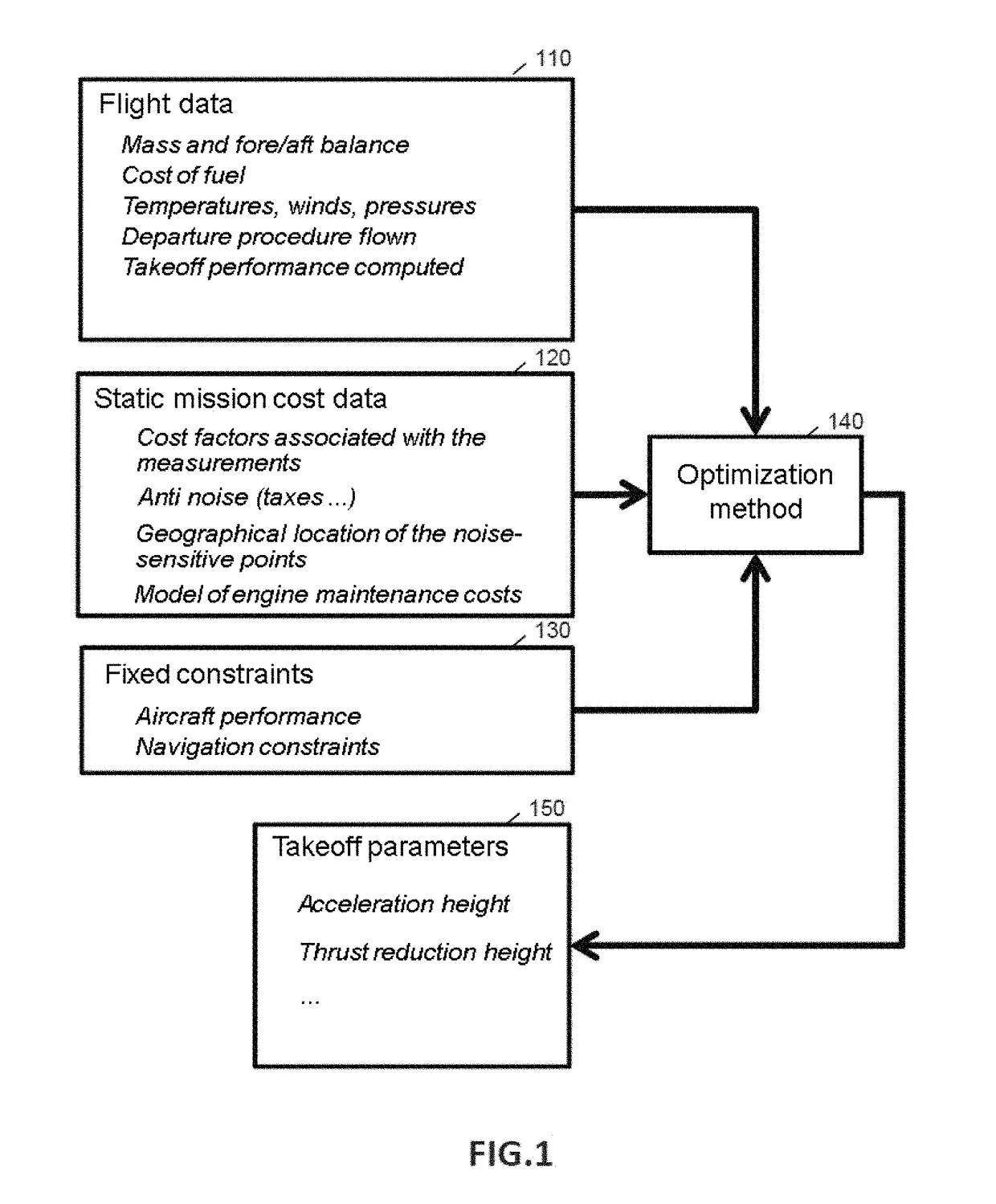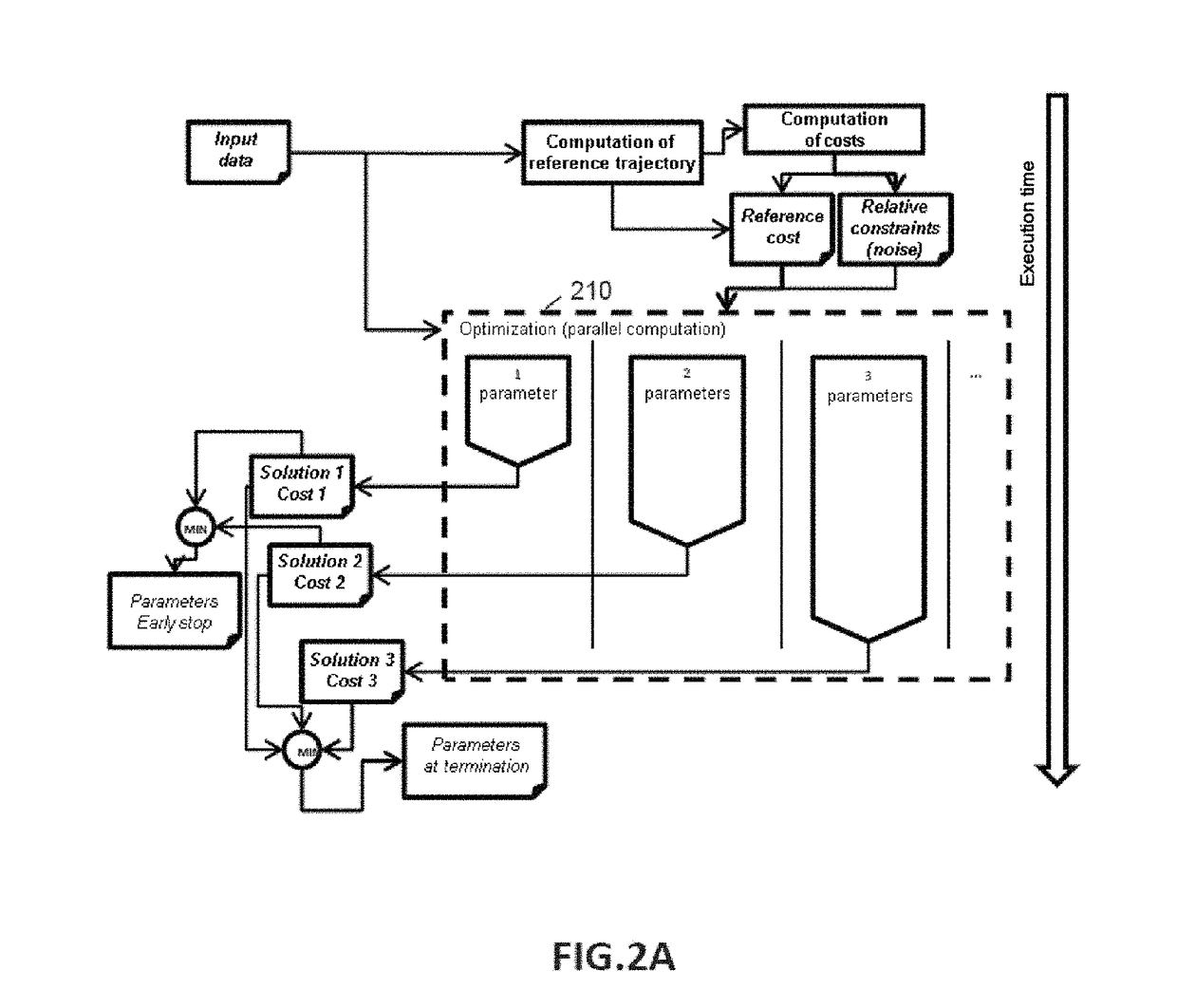Optimizing the trajectory of an aircraft
a trajectory optimization and aircraft technology, applied in the field of aircraft optimization, can solve the problems of complex search for optimal solutions, degrading other components when considered in combination, and restricting noise measurement on the ground, so as to reduce operational flight costs, reduce noise emitted by the airplane, and optimize fuel consumption
- Summary
- Abstract
- Description
- Claims
- Application Information
AI Technical Summary
Benefits of technology
Problems solved by technology
Method used
Image
Examples
Embodiment Construction
[0024]There is disclosed a method for optimizing the trajectory of an aircraft, comprising the steps consisting in determining one or more reference criteria CiRef on the basis of a non-optimized initial trajectory; determining one or more initial constraints K′j on the basis of the initial trajectory; determining a criterion Ci according to an analytical function of said criteria CiRef; and, per iteration cycle, determining an optimized trajectory; determining intermediate constraints K′j on the basis of the optimized trajectory; minimizing the criterion Ci determined under the initial constraints K′j and the intermediate constraints K′j; determining q takeoff parameters Pi. Developments describe an incremental iteration of the method, an interruption by the pilot, the use of criteria comprising the fuel consumption, the acoustic noise level, the emission of chemical compounds, the level of wear of the engine, the use of a gradient descent and of diverse optimizations. System and s...
PUM
 Login to View More
Login to View More Abstract
Description
Claims
Application Information
 Login to View More
Login to View More - R&D
- Intellectual Property
- Life Sciences
- Materials
- Tech Scout
- Unparalleled Data Quality
- Higher Quality Content
- 60% Fewer Hallucinations
Browse by: Latest US Patents, China's latest patents, Technical Efficacy Thesaurus, Application Domain, Technology Topic, Popular Technical Reports.
© 2025 PatSnap. All rights reserved.Legal|Privacy policy|Modern Slavery Act Transparency Statement|Sitemap|About US| Contact US: help@patsnap.com



